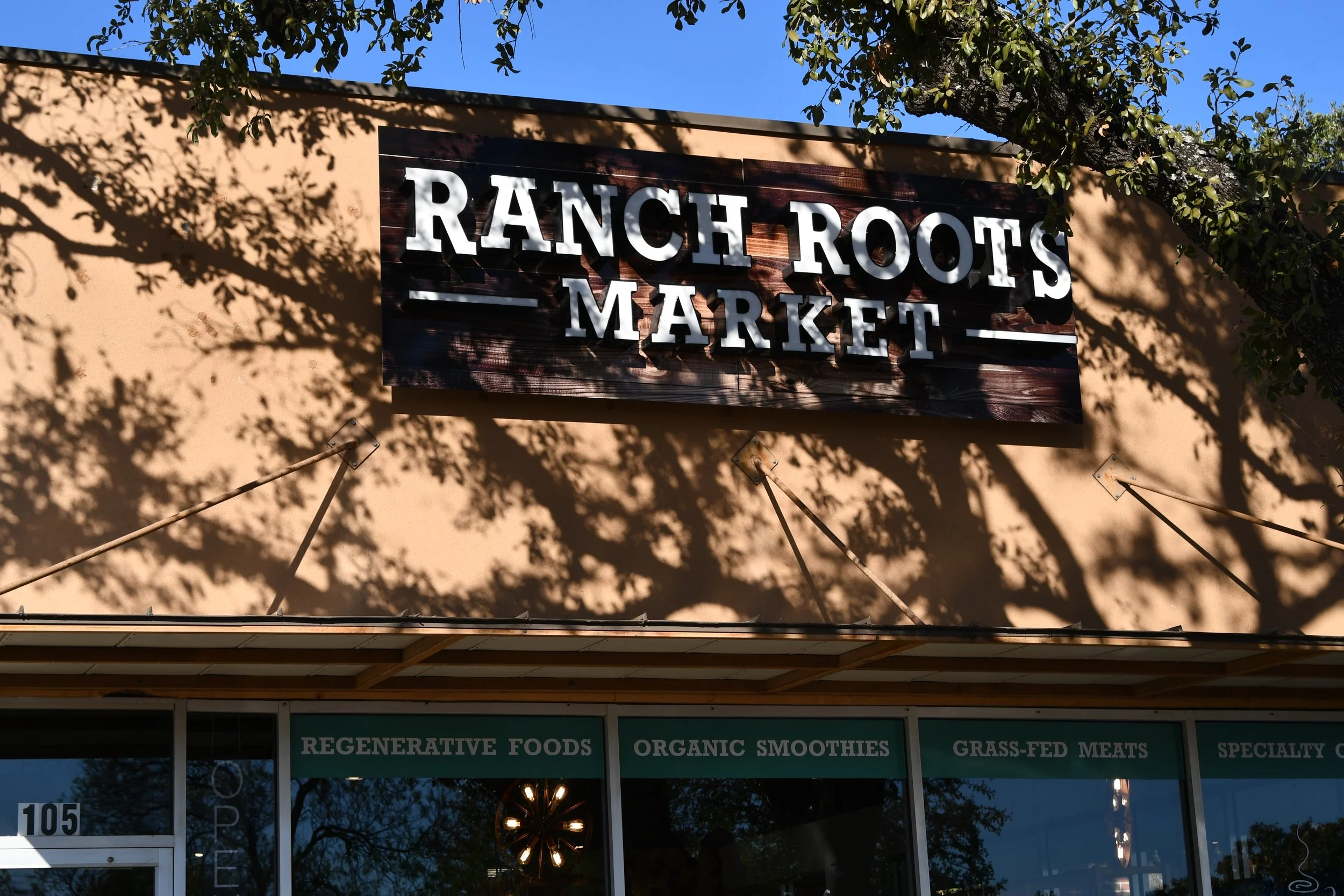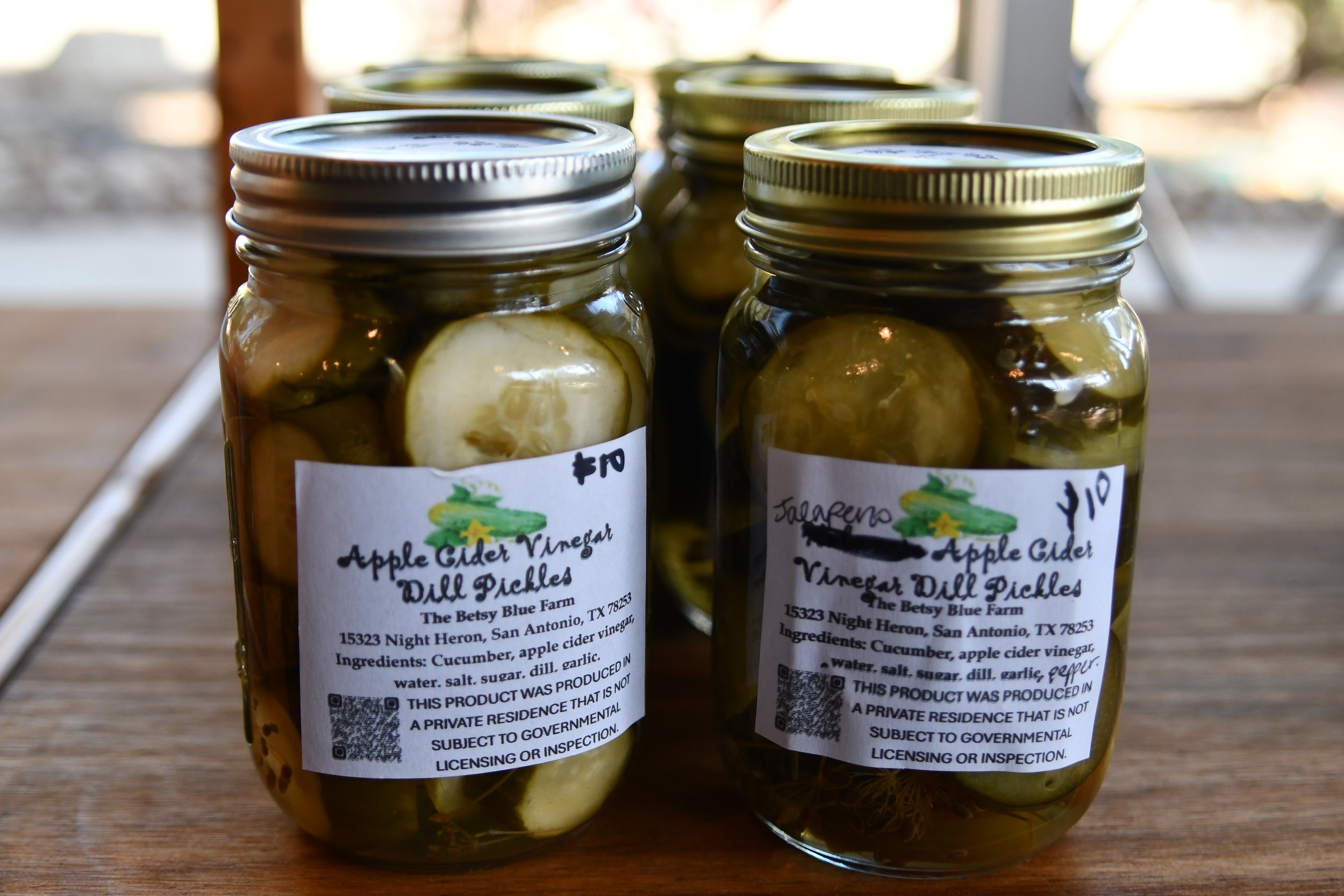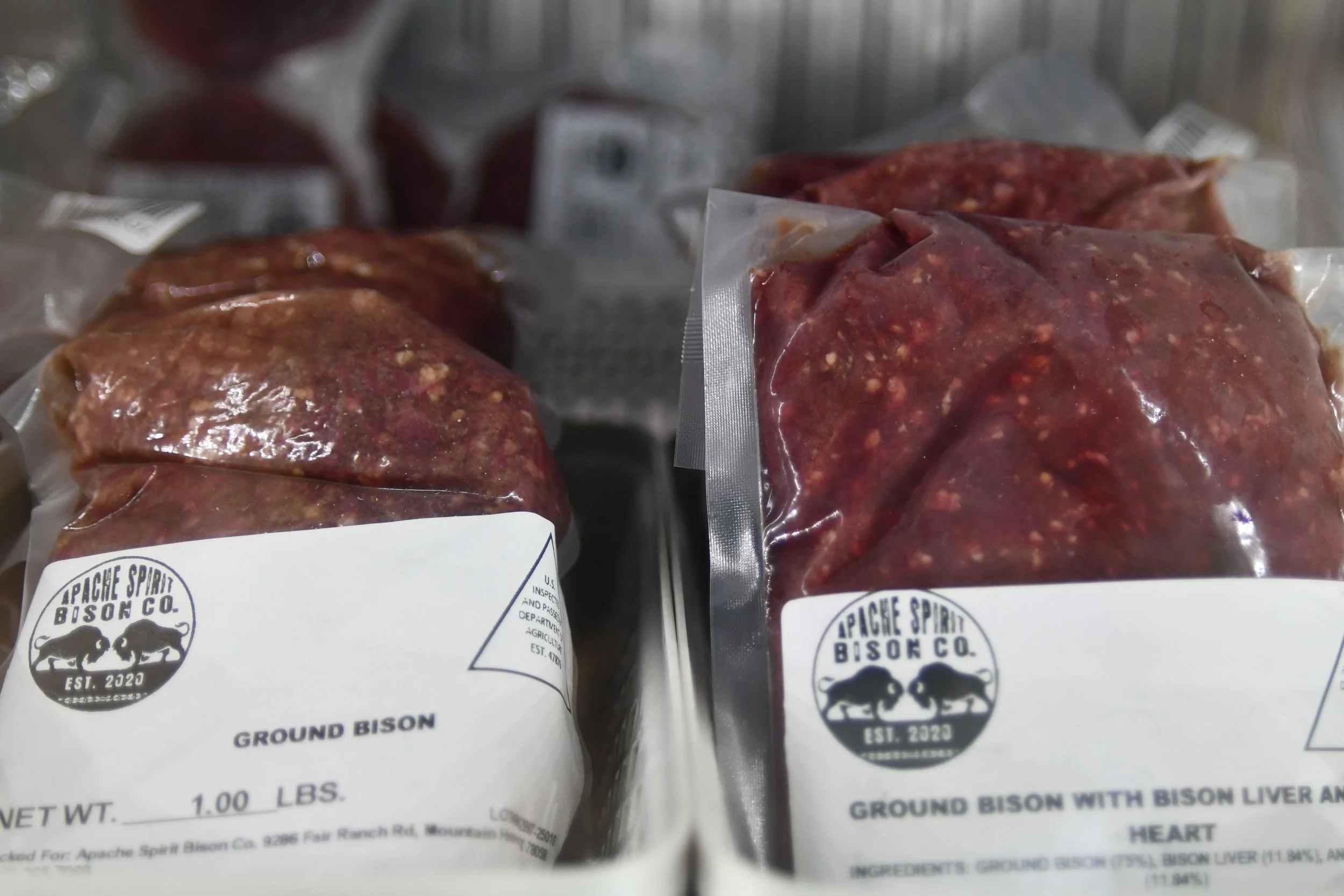The Efforts of Sustainability in Food & Ranch Roots Market
Written by Vi-Linh Nguyen | November 18, 2025
Photos by | Vi-Linh Nguyen
Human endurance has brought society far and fast in the universe’s grand timeline. From war to global pandemics, we find ways to survive. The beauty in that collective sense to push forward is a treasure to cherish in history. But that instinct for survival is a double edge sword without the mindful hand to wield it. Mindfulness helps in the balance between intention and education. Intention can be noble but easily push down the wrong path of pseudo-truths. Education and being aware of how to maneuver a changing landscape will be how we make it through the hurdles, and we can best see this in the food industry and its efforts to mitigate its long term impact on the environment.
Photos by | Kristen Amelia Arredondo
For a variety of reasons, we’re seeing a rising number of consumers switch to a more organic diet. But the circumstances of how the farming industrial complex works, makes organic certification for many farmers not affordable (Uggla). It’s a massive undertaking to convert field crop production to an organic farming system because of the scale of managing pests (USDA). But the effects of pesticides still have to be remembered though, being able to affect everything from lakes and the life they contain, to the hormones in the human body (Aktar et al.) Fortunately though, organic farming has seen a gradual incline over the past two decades (USDA). Even with foreign expats coming into the US, seeing a varying quality in food available, the quality is gradually rising because of that increase in consumer demand. The caveat of this increase in demand fueling the upward incline in an organic food market though is how much it varies by state. Consider, “the NASS Organic Survey shows that California producers sell 20 percent of their products directly to consumers, but Indiana growers market only 1 percent directly” (USDA). There is a rise in Texas however. Texas’s local food production has been lower compared to other states (Escoffier). But there’s a rising effort to shift the focus to their local farmers for the sake of dietary improvement. This could help in improving environmental sustainability in the long run if the effort goes well.
Take the Ranch Roots Market for example, a small up and coming grocery in the heart of Helotes Texas. I’ve had the opportunity to discuss their operation and what they hope to achieve with the Ranch Roots market. The Ranch Roots Market is the brainchild of Michael De Chene, Crissy De Chene, Jon Lamers and Duquesa Lamers. The idea started with addressing a growing need to better the health of their children, and the disruption of the large scale food industries during the lock down. They’ve created a place that allows small farmers to sell at one place instead of running to several different farmers markets to sell their wares, and allows consumers to support them thereby reducing the need for gasoline powered cargo trucks to bring refrigerated produce across several state lines (providing a bonus of combatting the fossil fuels’ effects on the environment too).
Photos by | Vi-Linh Nguyen
The community of small farmers is a very tight knit one. Everyone has their specialty and know who to go to for a specific need. This was how the Ranch Roots Market started out building their partnerships with local farmers outside the farming industrial complex. This is how they know who to work with now, on what they sell in store and online. Adding onto the partnership building also involved months of cold contacting farmers outside of their existing networks, but when the operation you’re trying to build up is still new, the trust is a heavy element to consider (on both sides of the arrangement). There’s going to be natural hesitation to the idea of working with startup organizations and you have to be able to stick to the standards you set for your organization on the other end too.
One has to wonder what made the Ranch Roots Market, in their effort to address a need for a cleaner and more environmentally conscious diet, set up up shop in Helotes Texas? There’s a more known audience of consumers who seek out organic, local produce closer to downtown, where the Pearl Brewery is for example. But Helotes is also still pretty car-centric, so there’s a convenience to having a store that provides organic produce in this part of town where residents don’t have to drive too far (thereby decreasing the carbon emission little by little). The Helotes population is mostly families according to the Helotes Texas Economic Development site’s demographics. The Ranch Roots Market set up shop in Helotes because the people behind started this as a means to address a familial need but also familiarity. The family data would also explain the median age to age (around thirty-eight) and the general trend of a lot of households having college educated members (Helotes EDC). Even with a good number of college educated households though, there’s still numerous ways data can be interpreted. According to Jonathan Jarry, a longtime science communicator for McGill University (one of Canada’s top schools ranked 27 out of 21,462 according to CWUR and 3rd in Best Global Universities in Canada according to USNEWS), major American reports outline that cell phone radiation as a leading cause for the declining health quality in America, which displays a shoddy attempt to propagandize the fight for the American physical well-being. As Jarry explains, the square one fallacy is the sand trap of data analysis that turns a science into motivated reasoning. There is data that already exists from world renowned sources that talks about the health of the populace. Understanding the existing data, instead of making new data to help fuel a flawed narrative will be what helps understand efforts like the Ranch Roots Market. This shop set up in Helotes because they have a community here, and still want to grow to help people. It’s an admirable thing to see. They have their strict standard on sourcing from local farmers that have kept them running up until now, and we can pick up on that kind of standard by learning to be more informed on how we interpret the vast array of information around us.
Photos by | Vi-Linh Nguyen
With the Herculean task of sourcing from local farmers and artisans as much as possible, the Ranch Roots market still provides produce from out of state. Even with local farmers and sustainability in mind, the U.S. Department of Agriculture cuts and their effects on all small farmers have to be considered when thinking about operating a grocery store in today’s age. According to the Washington State standard, a nonprofit and nonpartisan news outlet that focuses on independent reporting on various topics, the USDA’s grant programs have helped food banks and schools buy produce from small farms. This has helped in aiding an economic boost to rural areas by helping fund small farmers. But the certainty of that direct community boost is no longer certain (Hardy). Importing out of state goods is a lot to ask considering the scale small farmers operate on with the federal funding , and that’s without considering factors like shipping cost, refrigeration needs and minimum quantity (which has its own environmental consequences in the long term). Plus, when you’re a small business like the Ranch Roots Market, it’s difficult to decide which parts of environmental sustainability to prioritize. With the rise of state local food programs that try to make up for the federal ones being cut, the Ranch Roots market has a noble cause, but the path forward is treacherous because there is still a need for control. In a world where change is the only constant, a desire for control can feel soothing, but can prevent from adapting to progress.
Many big box office stores partner with food banks to donate their surplus stock when it’s feasible. This (broadly speaking) allows for working class individuals and families to have affordable ways to feed themselves and said families with a balanced, nutritious and organic diet. This partnership also helps in avoiding needless food waste, and contributes to the effort in environmental sustainability (because a lot of “ugly” but still edible produce doesn’t reach the consumer when grocery stores get their produce). But recent budget cuts this year have made it harder for people and their kids to afford balanced diets, specifically the kids. So many kids rely on programs from 21st Century Community Learning Centers initiative, which is the only federally funded program that helps kids in after school, before school and summer programs according to the Food Research and Action Center, a nonprofit that aids those who suffer from poverty related hunger through various means from partnerships and advocacy for equitable policies. Some of those include nutrition programs and feeding kids who need it. The Ranch Roots Market has the opportunity to help lower income and working class families in this effort, and have in fact brainstormed ways to do so. It’s a difficult task,with all the logistics one has to dance around, but with needed programs getting their funding slashed, the opportunity can be a sign to help bridge divided communities. Working out ways to provide for lower-income and working class communities can be a step to achieving the goal of uplifting communities through what local farmers can bring.
Environmental sustainability in food and increasing our own consciousness in what goes into the human body is a balancing act that warrants olympic effort. But the right path towards that goal is still important. Staying informed and mindful is important. So many professionals out there have spent years of their lives educating themselves on the complexities of the human body and there is more to figure out day by day. Their studies have led them this far because they care about their communities and want to help by making sure we are just as informed. The human body is complex and knowledge of it is constantly being discovered. Those discoveries help shape the language we use, which is why new words seem to show up day by day. Words to address this new knowledge is what helps us put meaning to this novelty. The meaning helps us in understanding it. I want to believe in the mission of the Ranch Roots market of helping local farmers and providing means to a healthier and more environmentally sustainable diet. But we have to be informed on how to go about it. Find the right sources, and find the right reason to go on this journey. It's very easy to get pushed into the wrong direction otherwise.
Sources:
Aktar, W., Sengupta, D., & Chowdhury, A. (2009). Impact of Pesticides Use in agriculture: Their Benefits and Hazards. Interdisciplinary Toxicology, 2(1), 1–12. National Library of Medicine. https://doi.org/10.2478/v10102-009-0001-7
Hardy, K. (2025, April 6). USDA cuts hit small farms as Trump showers billions on big farms • Washington State Standard. Washington State Standard; States Newsroom. https://washingtonstatestandard.com/2025/04/06/usda-cuts-hit-small-farms-as-trumpshowers-billions-on-big-farms/
Helotes Texas - Economic Development | Demographic. (2025, June). Helotes Economic Development. https://helotesedc.com/demographic/ Jarry, J. (2025, May 30). McGill University. Office for Science and Society; McGill University. https://www.mcgill.ca/oss/article/medical-critical-thinking-health-andnutrition/maha-report-mostly-data-vibes
McGill University Ranking | 2025 | CWUR. (2025). Cwur.org. https://cwur.org/2025/mcgill-university.php PETERSON, E., After School Alliance, & HAYES, C. (2025, June 4). The President’s Budget Proposes Cuts to Programs That Serve Meals When School Is Out - Food Research & Action Center. Food Research & Action Center; Food Research & Action Center. https://frac.org/blog/the-presidents-budget-proposes-cuts-to-programs-thatserve-meals-when-school-is-out
See Where McGill University Ranks Among the World’s Best Universities. (2020). Usnews.com. https://www.usnews.com/education/best-global-universities/mcgilluniversity-499986
Skorbiansky, S. R., Carlson, A., & Spalding, A. (2023, November 14). Rising consumer demand reshapes landscape for U.S. organic farmers. Rising Consumer Demand Reshapes Landscape for U.S. Organic Farmers | Economic Research Service. https://www.ers.usda.gov/amber-waves/2023/november/rising-consumer-demand-reshapeslandscape-for-u-s-organic-farmers
Starn, A. (2023, March 3). United States v. Europe: A battle of fresh v. processed. PACEDOCS. https://pacedocs.pace.edu/2023/03/03/united-states-v-europe-a-battle-of-freshv-processed/
Team, E. (2025, June 12). Best and Worst U.S. States for Access to Locally Produced Food. Escoffier; Auguste Escoffier School of Culinary Arts. https://www.escoffier.edu/blog/world-food-drink/analysis-of-local-food-production/
Uggla, A. (2023, March 29). American Consumers Crave Organic Food, but farmers are reluctant to give up conventional agriculture. WPI. https://worldpressinstitute.org/americanconsumers-crave-organic-food-but-farmers-are-reluctant-to-give-up-conventional-agriculture/














